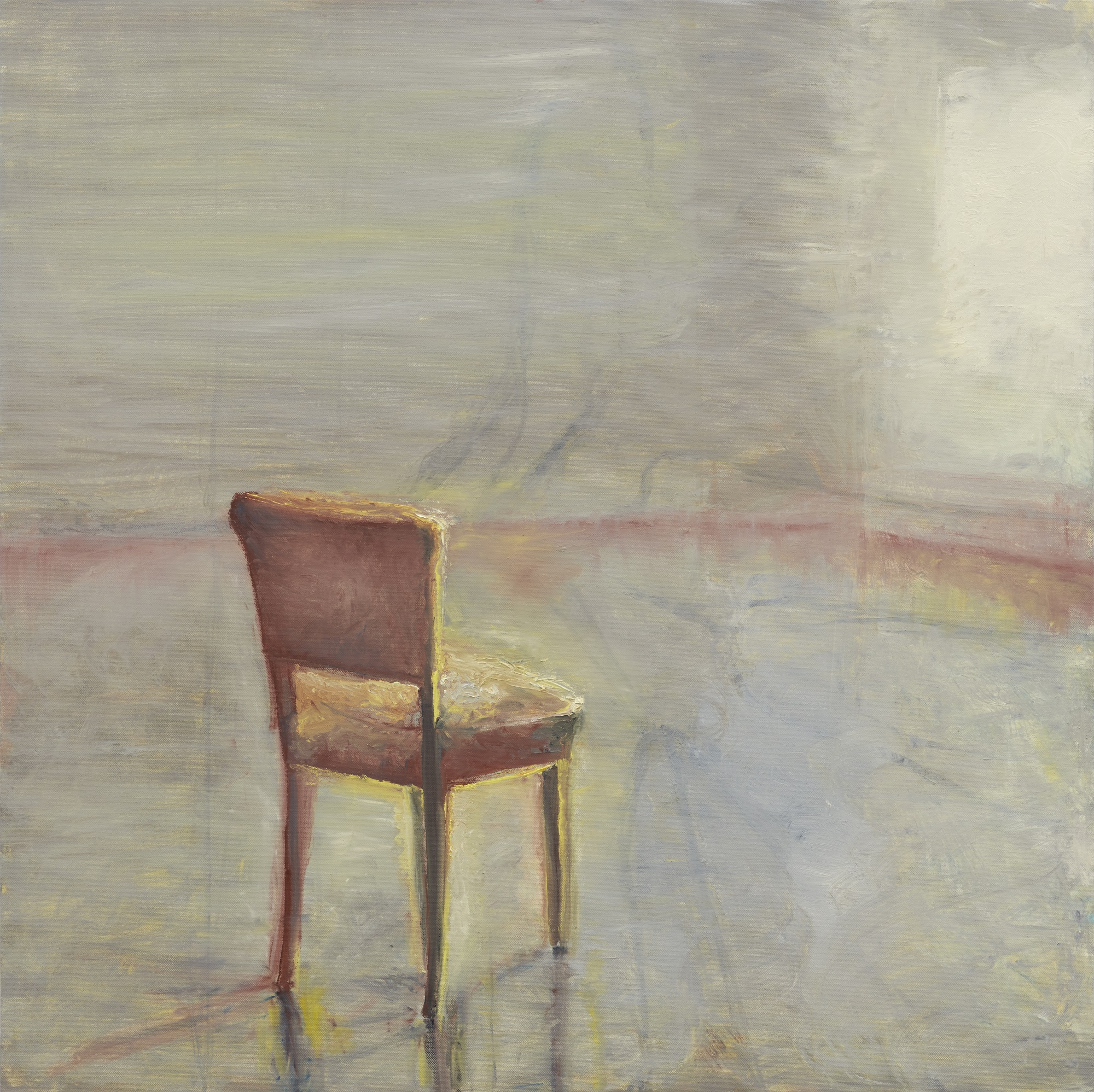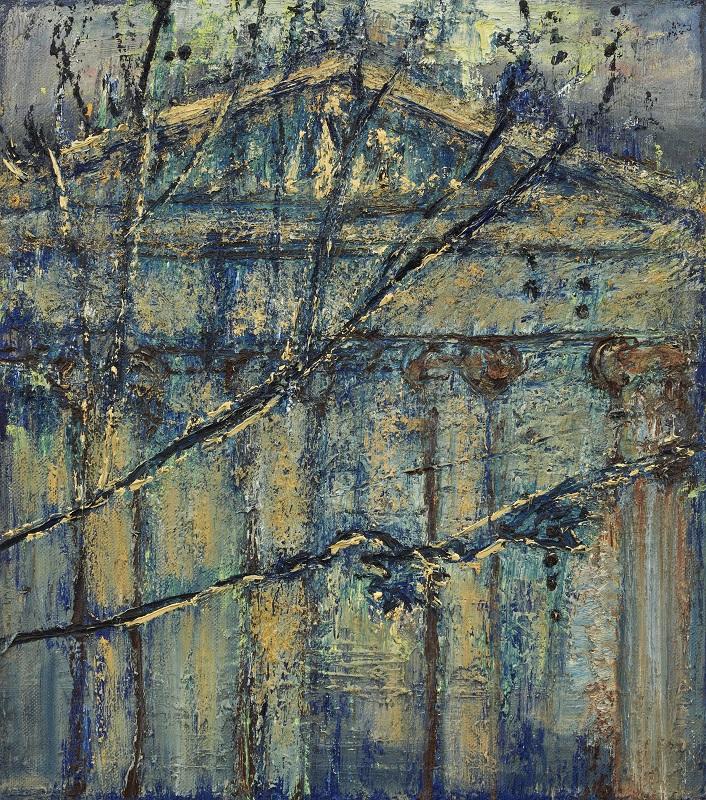From her fourth floor flat, which is also her studio, the painter Celia Paul looks out over the British Museum, the figures of the Muses carved into its pediment huge and present compared to the antlike, and usually teeming, human life below (main picture: British Museum and Plane Tree Branches). Up here, it is pigeons not people who provide company and entertainment, their springtime rituals carrying on as usual in the balustrades and gutters.
Paul has lived here since 1982, and though married, she has never lived with her husband, preferring she has said, to maintain her own private space. We might suppose that lockdown would be a continuation of this quasi-hermetic existence, her self-imposed isolation only distilled into a purer form as the world around her follows suit. Clearly, the past few months have given Paul time to paint, and this exhibition comprises 10 paintings all completed in lockdown.
 Though Paul has painted these views from her studio many times, this new series has a weight that anchors the artist in her own space like never before. Landmarks are provided by the British Museum and the BT tower in one direction, and the spire of St George’s, Bloomsbury in the other; a solitary chair is angled towards the light like a compass needle searching for north (pictured right: My Chair).
Though Paul has painted these views from her studio many times, this new series has a weight that anchors the artist in her own space like never before. Landmarks are provided by the British Museum and the BT tower in one direction, and the spire of St George’s, Bloomsbury in the other; a solitary chair is angled towards the light like a compass needle searching for north (pictured right: My Chair).
In a painting of the British Museum the snaking queues of tourists are gone, and instead a lone figure crosses the forecourt, the golden light of the early morning returning the building to some atavistic state, more Greek temple than London tourist trap. Without people, the city becomes an empty stage, eery but full of possibilities: for Celia Paul, its privileged observer, the British Museum is as replete with magic and promise as Claude’s Seaport with the Embarkation of the Queen of Sheba, 1648, a painting that hangs in the deserted National Gallery, not 10minutes walk away.
Different times of the day bring different moods, and British Museum, Night is lit up like an ocean liner, the forecourt now a turbulent inky blue, reminiscent of sea voyages and recalling, for Paul, “Shelley, who spent his last night in England in a house in Great Russell Street, before setting off for Italy where he was to die so young.”
Returning to a particular subject over hours, days and seasons is, as for so many artists before Celia Paul, an exercise in observation and imagination. Here though, the ritual element is just as significant, the act of painting functioning like a monk’s offices, marking time and providing points of focused meditation.
The exhibition marks the launch of the London Collective, a group of 40 galleries accessible via the Vortic Collect app which became available in March and provides a virtual reality environment for commercial galleries and their clients.
- Ceila Paul: My Studio at Victoria Miro until 25 July
- More visual arts reviews on theartsdesk










![SEX MONEY RACE RELIGION [2016] by Gilbert and George. Installation shot of Gilbert & George 21ST CENTURY PICTURES Hayward Gallery](/sites/default/files/styles/thumbnail_125_x_125_/public/mastimages/Gilbert%20%26%20George_%2021ST%20CENTURY%20PICTURES.%20SEX%20MONEY%20RACE%20RELIGION%20%5B2016%5D.%20Photo_%20Mark%20Blower.%20Courtesy%20of%20the%20Gilbert%20%26%20George%20and%20the%20Hayward%20Gallery._0.jpg?itok=3oW-Y84i)




Add comment